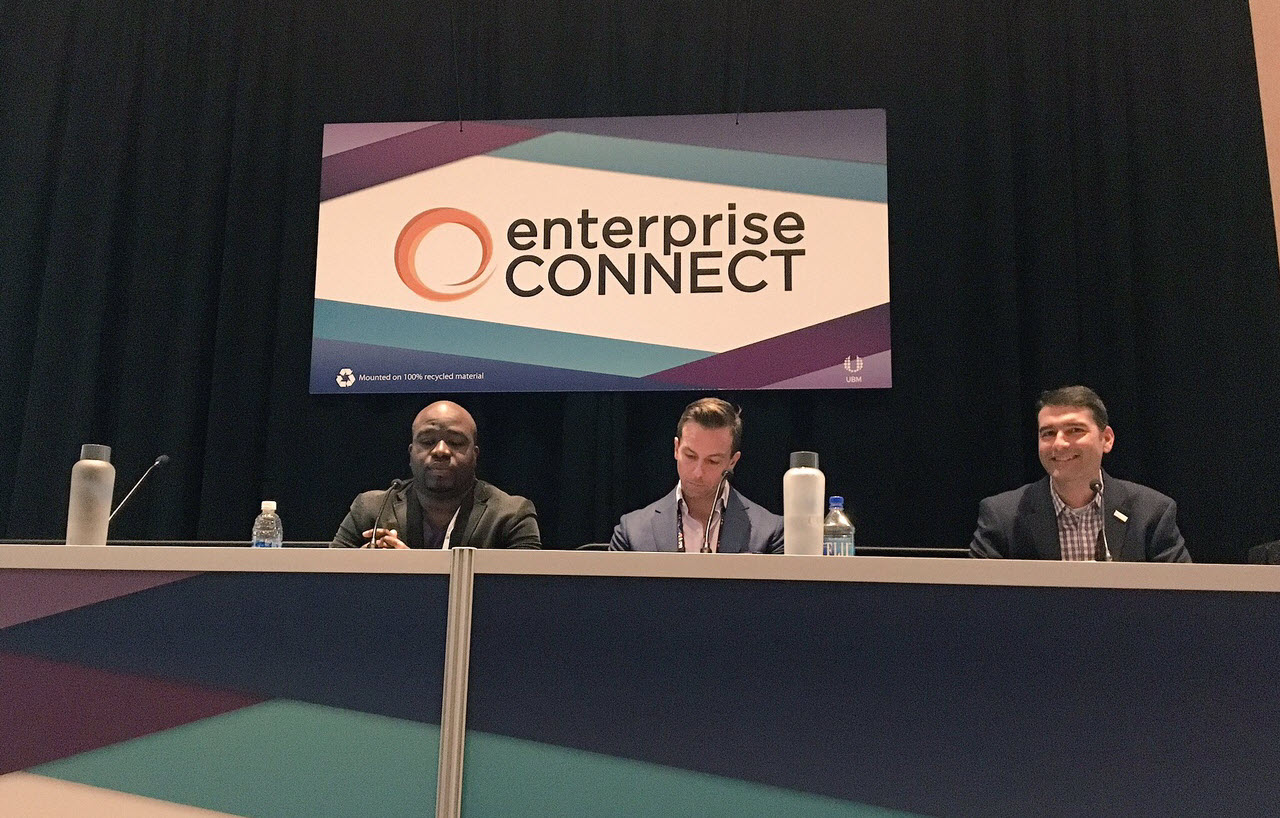The importance of team messaging and APIs to a truly unified collaborative communications experience were the two main themes RingCentral wanted to promote at the Enterprise Connect conference in Orlando, following last week’s announcement of the next generation of RingCentral Office and an expanded API suite that includes team messaging. Those also turned out to be major themes of the conference as a whole.
Team collaboration topped the conference themes remarked on by Eric Krapf, general manager and program chair of Enterprise Connect and publisher of No Jitter, when he introduced Tuesday’s main stage events, and APIs were second on his list.
“APIs are a big part of the reason team collaboration apps are so promising,” Krapf said. In other words, team messaging environments are interesting in their own right as streamlined collaboration experiences but they are more powerful because they can be tied to so many other applications via APIs.
The competition between communications and collaboration technology providers is over what bundle of services should be part of the team messaging and collaboration platform, first of all, but also over how best to extend that core experience with APIs.
Every major player, old and new, is now part of that race. For example, Cisco used a keynote to sell a competing vision for team collaboration with integrated video, including integration with high end telepresence hardware and forthcoming support for virtual reality headsets.
RingCentral entered the team messaging market with RingCentral Glip, which includes productivity features such as task management but also integrates with other task and project management products such as Asana. Now Glip is getting an open API and support for bots. The next generation version of RingCentral Office will allow users to send a team message, share a document, make a call, or start an online meeting from the same application.
The virtues of such an environment can be appreciated from many angles. RingCentral VP of Product Management Jose Pastor participated in one panel discussion that asked, “Persistent Team Collaboration Spaces: The Next Videoconferencing Revolution?” The question reflected the perspective of the moderator: Andy Nilssen, senior analyst and partner, Wainhouse Research, who covers enterprise video. The other panelists were Oji Udezue, group product manager for Atlassian’s HipChat, and Michael Affronti, VP of Product at Fuze.
Why is team messaging, or “persistent team collaboration” as his firm calls it, relevant to enterprise video? Nilssen’s reasoning was that once team messaging takes hold, it tends to take over about two-thirds of an organization’s internal communications, including lots of notifications that used to happen via email like online meeting invitations. “That radically changes where employees are initiating their video calls from,” he said.
Thus, every major communication and collaboration technology player is scrambling to assemble the right combination of features.
“Ultimately, in a B2B conversation, we’re trying to get more work done with less effort,” Pastor said. To accomplish that, he said, “we have unified and squeezed together a number of apps that people use.” The payoff comes when employees can more easily track down information they need in a unified stream of communications that covers all the ways they work with coworkers.
While the panelists were competitors, there was a lot they agreed on like the ability to appeal to younger members of the workforce, while supporting workflows that include remote participants and freelancers. “Video has got to be part of a continuous conversation,” Udezue said, where connecting online with a remote coworker becomes as natural as spinning around in your seat to ask a question of the person sitting next to you.
“Video calls are easy and fun — the same things I used to say about instant messaging when it was replacing email,” Affronti said.
Yet it’s still true that people have to be convinced to give up longtime email habits, Pastor acknowledged. What tends to make the difference is when there is enough activity in the team messaging workstream, including its integration with other applications, that the consolidation begins to show clear benefits for all parts of the organization. “If you can help start the flywheel, then you’ve got a huge leg up on adoption,” he said. “This stuff is viral, so champions are key.”
Updated Jul 01, 2025










